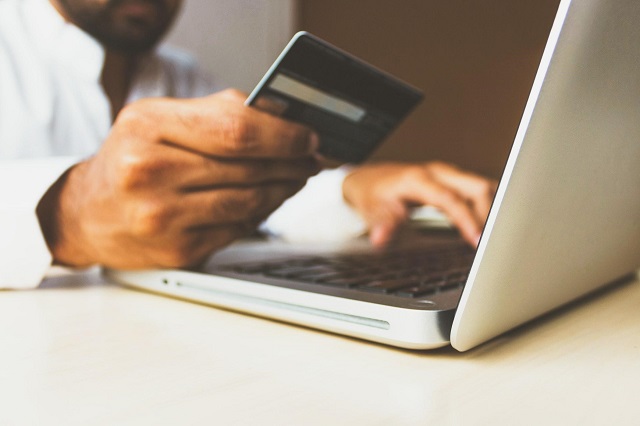4 Ways How Digital Fashion Solutions Shape Fashion Industry
The fashion industry since the start of the pandemic has plummeted with online sales. All over the globe, the market has been fighting against the effect of the virus; the US and China’s eCommerce has fallen down to around 30%-40% and Europe’s online sales have been on a downwards trajectory by 5%-20%, meaning a long-term goal will need to be put in place for the survival of the fashion industry post COVID-19.
It used to be easy to try clothes on in stores, attend fashion shows, or merely create an excuse to buy something new, but the pandemic has taken away these once valuable consumer behaviours that brought the fashion industry revenue and awareness. In reference to this, new approaches have been adopted by the industry as a whole to continue producing regular sales.
A New Age for the Fashion Industry
Customers significantly spend more money in stores than when online shopping; the fashion industry because of this, has had to mould itself into an approachable platform to entice customer sales. Fashion brands should be connecting with their online audience and be working towards extending their digital footprints. The market going digital will ultimately be the solution during this time of crisis, even with restrictions subsiding, customers are still wary to enter stores for retail shopping. Despite recently opening their doors back up to the public again, the majority of stores are not allowing customers to try on the clothing which was once the main factor of people going physically into stores to shop.
From start-up boutiques to iconic luxury brands, there has been a huge outbreak of digital use in the industry with companies creating new capabilities for themselves. Everything from COVID-19 related marketing, the use of SEO to simply finding digital ways to connect with customers has helped the industry withstand the crisis to the best of their abilities.
Digital Fashion Solutions
Once a retail marketing strategy during COVID-19 has been created, industries should focus on the endless possibilities the digital world has to offer. For one’s own fashion brand, these tools can be great to incorporate into their wider marketing approach as well as see the benefits digital solutions have already offered to other companies. Some of which include:
3D Design: Luxury brands such as Fendi, Dior, and Gucci have turned to 3D Design models to utilise made-to-order products. Customers using this technology will be able to visualise what their personalised item looks like via a photorealistic model before going through with the order. Companies incorporating this service into their website are essentially creating an interactive platform for users, which will likely entice sales and create a higher ROI. Even if you are a start-up company, London-based PlatformE provides 3D design solutions for businesses of all sizes.
Artificial Reality: With customers unable to try on anything because of the pandemic, companies are amplifying the use of artificial reality more than ever. Sunglasses company Ray-Ban has optimised the use of AR to not only try on different sunglasses but find the best pair of glasses for consumers using face recognition. Even several beauty companies have dabbled in the use of AR, such as MAC Cosmetics using face recognition to let customers see what makeup would look like on them without physically being in the store to try products on. This is a great solution for numerous businesses to allow customers to stay clear of others and abide by social distancing rules while staying safe at home trying on products.

Virtual Reality: For the first time ever, Fashion Week around the world will be held entirely through a virtual experience. Some brands are sticking to live-stream videos, others have collaborated with FWO to participate in a cumulative virtual reality platform as a part of the respected global Fashion Week. The bonus of this feature is companies can easily submit applications on the site to be a part of the events with traffic coming in from around the world, which can greatly help with brand visibility and notoriety.
The digital transformation in the fashion industry undoubtedly has had a creative and innovative touch that has been expanded on and will continue to do so for years to come. The fashion industry post covid-19 doubtlessly will keep digital a part of their ROI makeup but in the meantime should be practised by all companies to fight against the downfall of sales.
Conclusion
The impact of technology on the fashion industry will continue to help the market even out of times of distress. Extending the industry’s reach to accommodating customers with digital services, all-new ways of technology will only create a stronger market for eCommerce ROI.
Subscribe To Us
Contributors
Categories
Subscribe To Us
Contributors
Categories

This website uses cookies so that we can provide you with the best user experience possible. Cookie information is stored in your browser and performs functions such as recognising you when you return to our website and helping our team to understand which sections of the website you find most interesting and useful. Third party cookies such as Google Analytics is also used on this site to provide analytics in order to better understand the user engagement on our site.
You can adjust all of your cookie settings by navigating the tabs on the left hand side.
Strictly Necessary Cookie should be enabled at all times so that we can save your preferences for cookie settings.
If you disable this cookie, we will not be able to save your preferences. This means that every time you visit this website you will need to enable or disable cookies again.







0.Comments